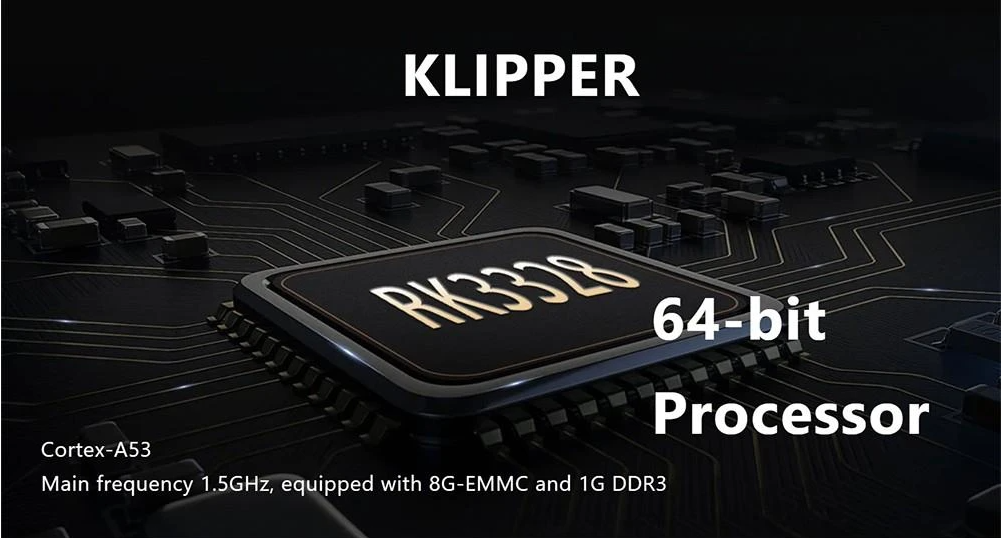50mm/s has basically been the standard speed of 3D printers for many years, and a few of them may reach 80mm/s or even 100mm/s. Once the speed is adjusted any faster, the print quality will decrease, and even result fail printing. Because of fast printing speed, the prints are bound to suffer from a surface quality problem known as “ringing”. It occurs because the printhead wobbles if it suddenly changes direction while extruding; as speed increases, this “ghosting” becomes more pronounced. But now, there are 250mm/s, 300mm/s, and even 600mm/s 3D printers on the market. How do these machines increase print speed while maintaining print quality?
3D Printing Speed Revolution
With the unremitting efforts of major 3D printer players and manufacturers, we have ushered in the era of high-speed 3D printing. This type of 3D printer has the characteristics of fast printing speed, high printing accuracy, wide printing range, and easy installation and operation. The breakthrough and realization of this technology are inseparable from a firmware called “Klipper”. A 3D printer is mainly composed of three parts: hardware, software, and firmware. The firmware is the bridge between the hardware and software, running on the motherboard of the 3D printer and managing all the real-time activities of the machine.
Combining the Klipper firmware with 3D printing technology is not a simple matter, using this firmware requires a lot of careful calibration. Unlike the 3D printer motherboard using Marlin firmware, which is responsible for calculation and execution at the same time, Klipper firmware is calculated by the upper computer, such as the Raspberry Pi development board, and controlled by the lower computer motherboard. The reason why the Klipper firmware is able to achieve faster printing speeds and higher printing accuracy is that it can adjust the timing of the movement in a very precise way, thus compensating for the vibration on the hardware when printing fast. In addition, it can provide high-precision stepping motor movement control, so as to ensure the stability of the machine at a faster 3D printing speed.
Fast 3D Printers Buying Suggestions
There are more and more 3D printers based on Klipper firmware on the market now. While possessing high-speed printing technology, additional performance design will be a very eye-catching highlight. Although the advertised speed may not be achieved during the actual printing process, the printing time is indeed greatly reduced. Here are some very popular high-speed 3D printers, you can choose according to your needs.
Creality K1 Max 3D Printer
- Printing Speed: ≤600mm/s
- Acceleration: ≤20000mm/s2
- Printing Accuracy: 100±0.1mm
- Layer Height: 0.1-0.35mm
- Nozzle Temperature: ≤300 Celsius
- Build Volume: 300*300*300mm
Additional Features: AI Camera, Al LiDAR, Filament Runout Sensor, Auto leveling, Power Loss Recovery, Air Purifier, Dual Cooling Fan, WiFi Connection
Creality K1 Max has a larger printing volume of 300*300*300mm, and is configured with advanced AI lidar and AI camera, which can automatically detect whether the printing fails or works normally. If you pursue both speed and machine intelligence, then you can consider this 3D printer.
Creality K1 3D Printer
- Printing Speed: ≤600mm/s
- Acceleration: ≤20000mm/s2
- Printing Accuracy: 100±0.1mm
- Layer Height: 0.1-0.35mm
- Nozzle Temperature: ≤300 Celsius
- Build Volume: 220*220*250mm
Additional Features: Filament Runout Sensor, Auto leveling, Power Loss Recovery, Dual Cooling Fan, WiFi Connection
Creality K1 also features an ultra-high printing speed of up to 600mm/s, but its printing volume is only 220*220*250mm, and it does not have a built-in intelligent system such as an AI camera. If you pursue high printing speed but do not have enough budget, then the Creality K1 high-speed 3D printer is a suitable choice.
QIDI TECH X-Max 3 3D Printer
- Printing Speed: ≤600mm/s
- Acceleration: ≤20000mm/s2
- Printing Accuracy: ±0.1 mm
- Extruder Temperature: ≤350°C
- Build Volume: 325*325*315mm
Additional Features: Auto leveling, Cooling Fan, Air Filter, Chamber Temperature Control, Filament Detection, WiFi Connection
Compared with Creality’s high-speed 3D printer, the advantage of QIDI TECH X-Max 3 lies in its larger print size and higher extruder temperature. This means that the QIDI X-Max 3D printer can support printing more engineering-grade thermoplastics. If you have enough budget and want to print larger models, then this printer is the best choice.
QIDI TECH X-Plus 3 3D Printer
- Printing Speed: ≤600mm/s
- Acceleration: ≤20000mm/s2
- Printing Accuracy: ±0.1 mm
- Extruder Temperature: ≤350°C
- Build Volume: 280*280*270mm
Additional Features: Auto leveling, Cooling Fan, Chamber Temperature Control, Filament Detection, WiFi Connection
The QIDI X-Plus 3 is similar to the more advanced X-MAX 3, but has a slightly smaller print volume and lacks a carbon air filter. The 3D printer comes fully assembled for quick and easy setup and use. Its configuration is in the middle of Creality K1 and Creality K1 Max.
Creality Ender-5 S1 3D Printer
- Printing Speed: up to 250mm/s
- Acceleration: up to 2000mm/s2
- Hotend: up to 300°C
- Build Volume: 220x220x280mm
Additional Features: Auto leveling, WiFi Connection, etc
Creality Ender-5 S1 is a cost-effective high-speed 3D printer, very suitable for those who have a small budget and want to try high-speed printers for the first time. Although its maximum printing speed is only 250mm/s, its printing volume is similar to that of Creality K1, and its sturdy square frame makes the printing process very stable. You will definitely not be disappointed to choose the Creality Ender-5 S1 3D printer.







